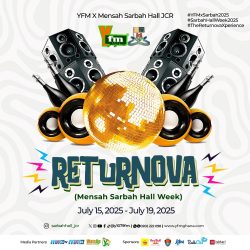- …deliver a unified and consistent environment at all touchpoints, not just occasionally, but consistently
The new world confronting us poses great challenges requiring every organization to develop a learning culture to keep pace with change. One of the biggest mistakes we could make is to assume that we know all the answers, we know what has to be done.
However, our reality is that we now live in a world where change is happening faster than we learn therefore we must develop a learning mindset and refrain from the all-knowing pose to stay relevant in this ever-changing environment. Change requires humility, tenacity, courage, fortitude, and the willingness to accept that the answers can only be found after asking the right questions.
We must move from tactical execution (“how do we”) to strategic ideation (“how might we”). As Ruth Crawley, a Customer Experience advocate with iconic brands puts it bluntly, ‘the future calls for urgent patience to create unified, seamless and contactless touchpoints where customers can engage on their terms.
According to Deepak Chopra, the Indian-American alternative medicine advocate, ‘every time you are tempted to react in the same old way, ask if you want to be a prisoner of the past or a pioneer of the future. In an environment where change happens faster than we learn, leaders must cultivate a purpose-driven mindset of embracing future uncertainties to stay the course by being pioneers of the future they will realize this quest.
Staying the course means delivering consistent experiences now with an eye on a future where change is the only constant. Our approach must be one of consciously creating, adapting, and evolving as opposed to sleepwalking and reacting to change. To do this, experts advise a few things that must be in focus.
First, keeping a keen eye on the customer life-cycle process, second, delivering proactive processes, and third, delivering proactive support. These are must-haves that will help drive you to the level of consistency you require to keep your customer’s interest in focus. Your customer experience framework must focus on the future. It requires that you address your customer experience as a process and not just a project, but one that necessitates a change in mindset.
Keeping an eye on the customer life-cycle process
Attracting the customer life-cycle and closing the deal is hard work however this is not the hardest part of your customer engagement strategy. The journey that begins after the sale is what poses the greatest challenge. The danger in losing a customer is that you will most likely never get them back. Therefore, in your quest to deliver great experiences, as your marketing team works relentlessly to create a variety of campaigns to attract the attention of your ideal clients, it is worth investing time and money to get things right and ensure that your teams follow the processes that will lead to consistent acquisition results.
First in this process is to employ a holistic view with a disciplined process to understand all options available to the Customer. This must be rigourous enough to help frame the problem beyond symptoms. Describe the problem before prescribing the solution. Don’t rush to the answer. It is recommended that you use communication methods including (and not limited to) email, phone, SMS for personalized engagements – to maximize impact and to demonstrate how delighted you are to have them as a customer. As a consequence of the COVID pandemic and after effects, many purchase activities have shifted online. Leverage this opportunity as best as you can but ensure that you get the balance right.
Use SMS status updates where possible to ensure that customers are not left in the dark especially when it comes to a service or product they are expecting. Provide detailed and transparent status updates, especially by text message if possible. Getting a phone call for my FedEx delivery a few months ago was so cool. This was especially because the delivery was at a post just a 10-minutes drive away from my home in Tema. First, I got an SMS update giving me an estimated delivery time next to the phone call, and voila I received my item. Ensuring that you are engaging the customer consistently with the right media is the right thing to do.
Delivering proactive processes
The 3 key elements that influence a good customer experience strategy are people, process, and technology. These are critical to your planning a fit-for-purpose Customer Experience initiative. Researchers report that 85% of Customers will pay up to 25% more to ensure a superior experience.
Your Customer Experience is not a project, it is a mission, note that fundamentally you are in the people business with the customer at the centre. According to Ruth Crawley ‘Customers encounter more impressions than they can process or remember’. The following recommended processes will not only help ensure that your customer experience remains positive after the sale, but they will also reduce the inbound load on your frontline.
Putting yourself in the customer’s shoes consider how the customer is feeling moments after their purchase. Their excitement might turn to buyer’s remorse if they are not sure what will happen next or if they don’t hear from you again. The following are recommended actions to help maintain the confidence that they have made the right decision;
- Send a confirmation email which outlines the next steps:
- Delivery schedule
- Link to a “How to Use” video or contact person to speak to
- Details of all your support options – during and after hours
- Send a text message when the product has been dispatched, with an ETA and tracking details (if available), I daresay that many of our local couriers are very poor at follow-up processes, they appear to switch off very quickly after the sale.
- If they have purchased a consultation or tickets to an event, confirm arrangements by text and email, kudos to Ebo Whyte and his team they are very particular with this, once they receive your details they keep reminding you consistently until the day of the actual event.
- Call them and thank them for the business and explain the next steps – and do it within 12 hours; 24 at most. This is the action that will surprise and delight them the most.
Naturally, the onboarding process will depend on the type of product or service that you are supplying, so simply adapt these to suit your business. It is recommended that you use two or three communication methods – email, phone, SMS – to maximize impact and to demonstrate how delighted you are to have them as a customer.
Deliver proactive support
Identify and resolve customer issues before they become problems. They are more likely to trust you when you genuinely show care and rarely let them down. Stay in touch with customers and be aware of their changing needs as they grow and evolve. One way you can do this effectively is by providing proactive post-purchase service, this demonstrates your commitment as a partner in their success. Your goal here is to stay on top of your customer’s needs to help you to refine your total customer experience so that you stand out from the competition and create loyal, satisfied customers.
A survey by Microsoft in 2017 of consumers in five countries, revealed that Customers expect more from brands when it comes to convenience, resolution times, and agent expertise. 96% of consumers responded that customer service influences brand choice and loyalty. You can only deliver an out-of-the-world customer experience when you have an intuitive understanding of your customer’s preferences.
Knowing this is useful, you can deliver the level of service customers demand by ensuring that you have the right elements in place. For example, your workflows must be designed to achieve results and minimize disruptions to your operations. Additionally, you need to offer consistent pieces of training to help your team improve skills, efficiency, and productivity.
Focus on changing the culture of your company and leave behind the focus on technical operation issues and, instead, turn to the market and be customer-driven. The edict is this! To be a very successful technical operational organization become a business enterprise or business organization. This was the story of Scandinavian Airlines (SAS), according to Jan Carlzon a former CEO: “We used to fly aircraft, and we did it very successfully. Now we have to learn the difficult lesson of how to fly people.”
The real value here is your perception of the customer. When they use your products and services you need to ask yourself what their impression or perception of your brand is. Find out how many of your customers understand what you are offering them and go on to deliver enhanced experiences to them with consistency.
These sentiments are capped by Ruth Crawley. She expresses her opinion clearly in this way. ‘Vision and well-captured mission statements are worthless without action. change requires leadership alignment and commitment, with purposeful integration and synchronization at all touchpoints across the ecosystem. It is not a tweak. It requires correction. A unified review of touchpoints across the customer journey increases the ability to understand behavior patterns, drive relevant engagement and upsell opportunities as well as anticipate gaps and correct pain points.
These must be consistent within your processes coupled with a deliberate training regime that will ensure that your internal publics are aligned with your customer agenda and have enough ownership to be active participants in your quest to design future experiences for Customers. Doing this will keep you focused on your customers’ needs and enable you to stand out from the crowd as a provider or brand of choice.
 |
The Writer is a Management Consultant. He can be reached on 059 175 7205, [email protected],
https://www.linkedin.com/km-13b85717
|










